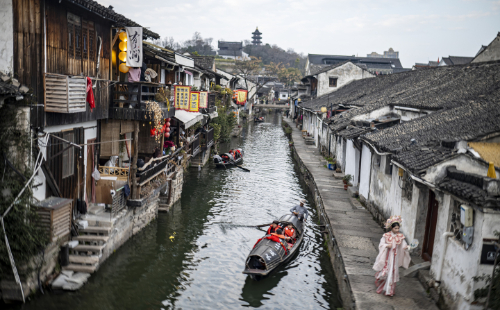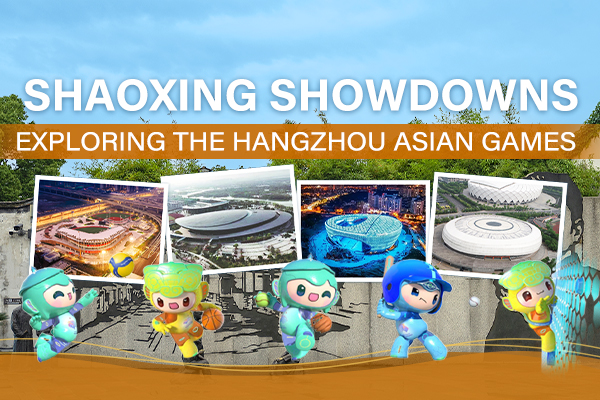Shaoxing's millennia-long journey towards World Heritage status

Shaoxing, Zhejiang province, features traditional architecture and a water landscape. [Photo/Tide News]
Shaoxing, a bastion of Chinese history and culture spanning 2,500 years, is undertaking a significant endeavor.
On Jan 29, Mayor Shi Huifang announced Shaoxing's commitment to expediting the process of seeking World Natural and Cultural Heritage status for its ancient city area. Intensive research is currently underway to help navigate this course.
Situated at the nucleus of the State of Yue during the Spring and Autumn Period (770-476 BC), Shaoxing is a focal point for legendary narratives, including stories of Emperor Shun's agricultural pursuits, Emperor Yu's gatherings of feudal lords at Kuaiji Mountain, and the mausoleums of the Southern Song Dynasty (1127-1279).
Official statistics from the 1990s reveal Shaoxing's rich legacy of over 10,000 bridges, spanning from the Song Dynasty to contemporary times. Currently, four emblematic World Heritage sites within Shaoxing's ancient cityscape stand as reflections of its intricate riverine infrastructure.
Shaoxing's millennia-long symbiosis with water has cultivated a fertile cultural landscape. The city has nurtured a lineage of luminaries, from ancient figures like calligrapher Wang Xizhi and philosopher Wang Yangming to modern personalities like Premier Zhou Enlai and literary giant Lu Xun.
The profound integration of ancient cultural legacies into Shaoxing's contemporary social fabric underscores its cultural continuity. These customs permeate various facets of daily life, from ceremonial rituals to culinary traditions.
Shaoxing proudly boasts 26 national-level intangible cultural heritage items, alongside 86 provincial-level representative projects and 261 municipal-level endeavors.


 Shaoxing Showdowns
Shaoxing Showdowns Zhejiang: A Decade of Progress
Zhejiang: A Decade of Progress Shaoxing in expats' eyes
Shaoxing in expats' eyes